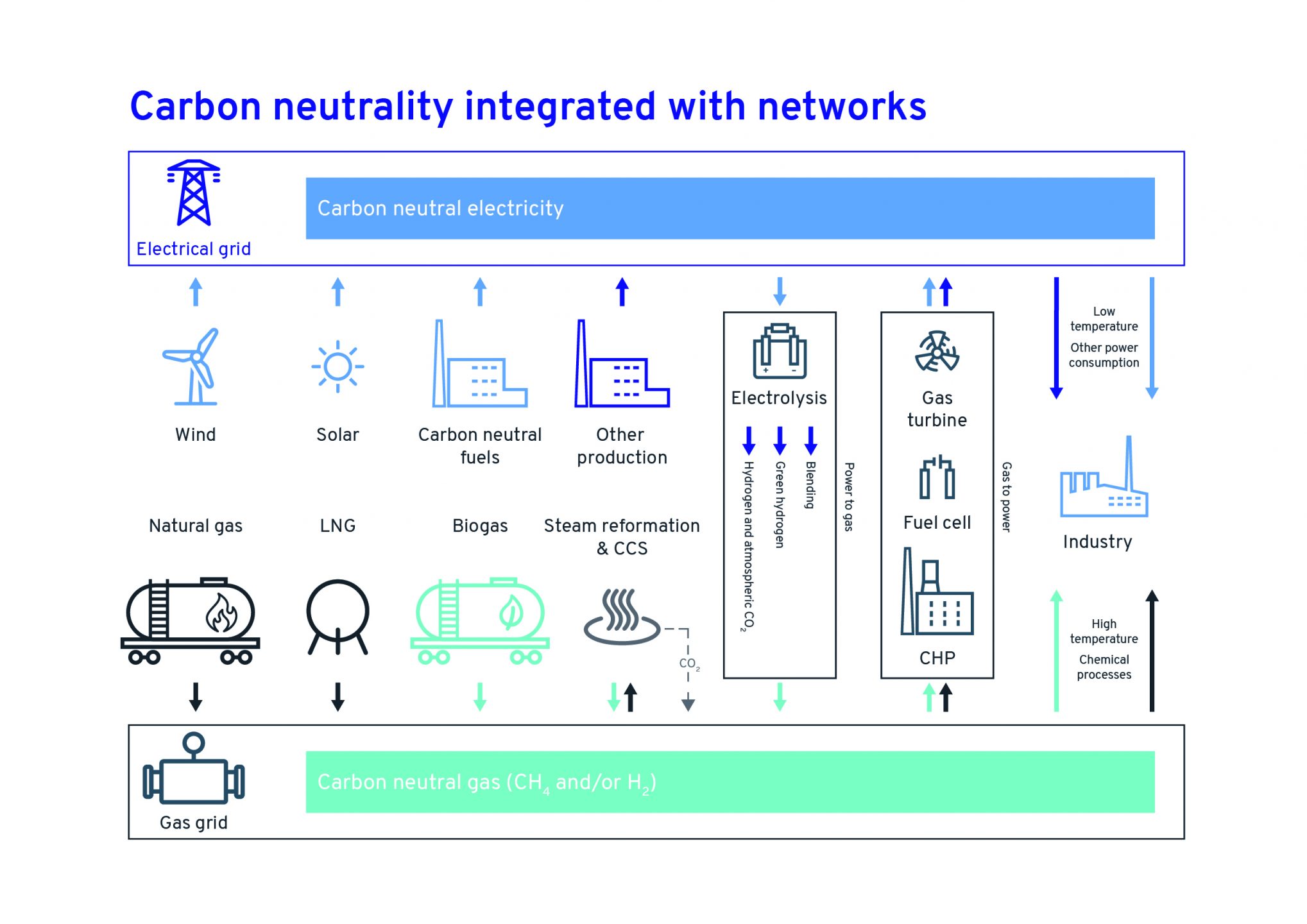A green gas network provides great opportunities
September 14, 2020- InfraTalks – utility infrastructure insight
In my previous blog post we looked at local solutions for reducing carbon emissions from gas usage. In this post we look at the possibilities offered by the gas network once these solutions have been identified.
According to a recent report by the Gas for Climate consortium, European gas has a good chance to reach net-zero carbon neutrality by 2050. This can largely be achieved by increasing biomethane production, especially from agricultural side streams, and by heavily increasing hydrogen production – and then distributing these fuels via the existing natural gas network. It is possible to produce carbon-neutral hydrogen for the network that is up to 20% “green” through electrolysis, i.e. the decomposition of water due to the passage of an electric current (using wind and solar power); alternatively, “blue” hydrogen can be produced with, for example, steam reforming using natural gas as feedstock, or with oxidised carbon dioxide stored in the ground (with the so-called CCS process).
It is also technically possible to support the gasgrid and gas storage facilities with surpluses from the electrical grid, either directly with hydrogen or with syngas produced using atmospheric or renewable carbon dioxide (so called power-to-x process). In this way a complete gasgrid with storage tanks covering all of Europe, or a separate hydrogen gasgrids, can be harnessed to offset production peaks in the electrical grid and to function as a “battery”.
Renewable gas from the markets
The expansion of the gasgrid and opening it up to competition in Finland, one of the last countries in Europe to do so, finally makes it possible to buy biomethane through bilateral agreements from producers registered in Finland or the Baltics. In areas where there is no local gasgrid available it is worth investigating options for purchasing biomethane or biopropane from the market in pressurised or liquefied containers (as liquefied natural gas, or LNG).
Renewable gas – from user to producer
There are calls for a rapid opening up of the European gasgrid to hydrogen and carbon dioxide trading in addition to natural gas and biomethane. This was included as an explicit objective in, for example, the European Network of Transmission System Operators for Gas (ENTSOG) 2050 roadmap. Integration with the electrical grid as a system for offsetting peak consumption also opens new perspectives. However, emission allowance prices must rise significantly from currrent levels in order for the technologies and the markets to support the transition towards carbon neutrality. Further, the investments required for hydrogen and biomethane production must be supported with, for example, guaranteed pricing. We also need an extensive lowereing of the barriers to international gas trade.
This transition can be brought about surprisingly quickly; the Gas for Climate consortium suggests a mandatory 10% renewable gas network target on the European level by 2030. Such recommendations from consortiums and independent experts are sure to influence political decision-making on emission trading and energy tax reform at both EU and national level. When realised, these changes will quickly provide new opportunities for industry to achieve carbon-neutral production and even sell excess and surplus gas.

The role of carbon neutrality in gas and electricity grids
Together with a reliable and accomplished expert partner, a responsible and broadminded industrial player can start preparing today for the opportunities the coming years will present.
We are happy to help you with your goals related to carbon neutrality, resource efficiency or other energy or material related infrastructure development projects. Please contact Teemu Klingberg for further discussions.

Teemu Klingberg
Director, New ventures
+358 50 317 1448
